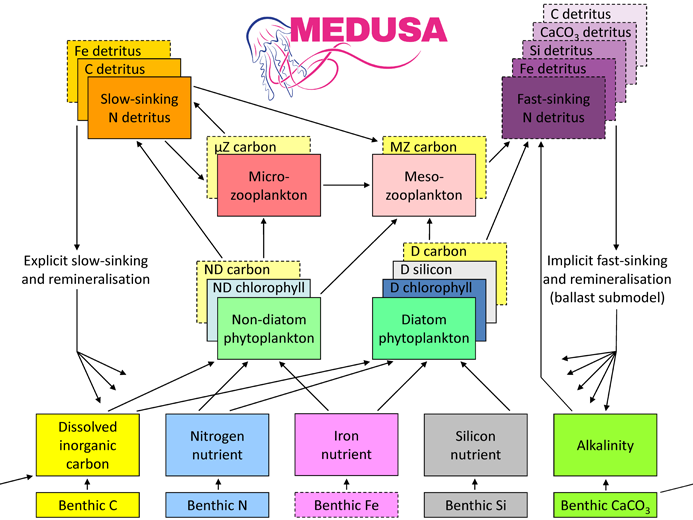MEDUSA is developed by UK National Capability programmes, and is run in high-resolution configurations for forced-ocean hindcasts (observation-based recent past) and future projections, and as a component model of the UK Earth System Model, UKESM1 (CMIP6 and CMIP7).
Find out more
-
Medusa Description
MEDUSA - the Model of Ecosystem Dynamics, nutrient Utilisation, Sequestration and Acidification
-
History
MEDUSA was originally conceived and developed as part of Oceans 2025 Research Programme
-
Team
Meet the MEDUSA team who are responsible for the development and maintenance of the models and code.
